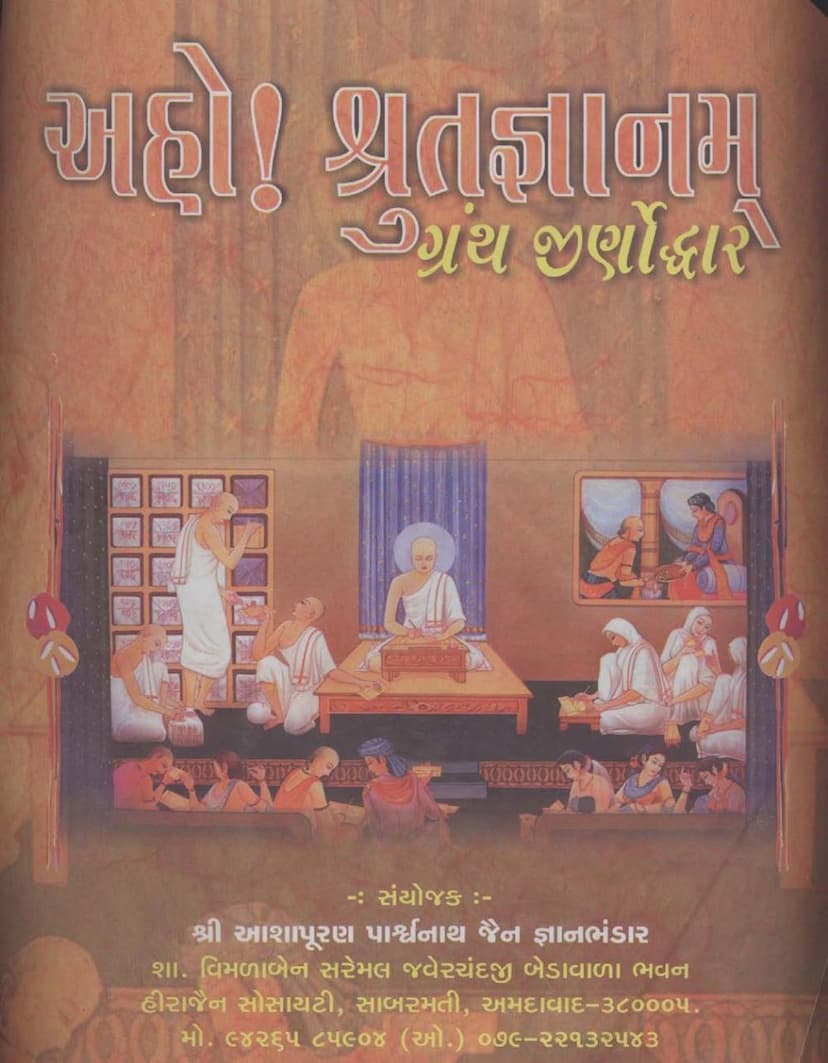Jain Pratima Lekh Sangraha
Added to library: September 2, 2025

Summary
Here's a comprehensive summary of the Jain text "Jain Pratima Lekh Sangraha" by Yatindrasuri and Daulatsinh Lodha, based on the provided pages:
Book Title: Jain Pratima Lekh Sangraha (Collection of Jain Image Inscriptions)
Author(s): Yatindrasuri (Compiler and Coordinator), Daulatsinh Lodha (Editor and Translator)
Publisher: Yatindra Sahitya Sadan Dhamaniya Mewad
Overview:
The "Jain Pratima Lekh Sangraha" is a monumental compilation of Jain inscriptions, primarily focusing on those found on metal and stone images of Tirthankaras and other deities. The book is a result of extensive research, collection, and scholarly effort aimed at preserving and disseminating valuable historical and religious information embedded in these ancient inscriptions. The text highlights the critical role of inscriptions in understanding the history, art, architecture, and religious practices of Jainism over centuries.
Key Aspects and Content:
- Purpose: The primary goal of this collection is to document and make accessible a vast number of Jain inscriptions, many of which are rare or previously unpublished. It serves as a crucial resource for scholars, historians, and anyone interested in Jain history and epigraphy.
- Compilation and Editing: Acharya Yatindrasuri is credited as the compiler and coordinator, while Daulatsinh Lodha (also known as 'Arvind' B.A.) is responsible for the editing and translation. This collaboration underscores the multidisciplinary approach to the project.
- Scope: The book contains a comprehensive catalog of inscriptions, meticulously organized and presented. The provided pages reveal a detailed index of hundreds of inscriptions, often referencing specific locations, dates (Sambat/Vikram era), reigning monarchs, reigning religious preceptors (Acharyas), and the families or individuals who commissioned the images and their associated inscriptions.
- Content Focus:
- Inscriptions on Images: A significant portion of the book is dedicated to inscriptions found on Jina images (metal and stone), including Pratimas (idols), Panchatirthis (five-part representations), Chamatkar Purn (miraculous) images, and Karyotsarga (standing) postures.
- Historical Context: The inscriptions provide invaluable historical data, including the founding of cities and temples, the lineages of ruling families (like the Dharu dynasty, Paramaras, Chauhans), periods of Jain prominence, and the influence of various Jain gacchas (sects or lineages).
- Religious and Social Practices: The inscriptions shed light on devotional practices, the sponsorship of religious activities by wealthy patrons (like Seths, Shravakas, Shrāvīkās), the role of Acharyas in consecrations (Pratishtha), and the societal structure of Jain communities.
- Genealogical and Lineage Information: The text meticulously records the lineage of Acharyas, their gurus, their respective gacchas, and the families or individuals who commissioned the images, often including their lineage, gotra, and village.
- Art and Architecture: Inscriptions related to temples, Devakulikas (small shrines), Chowkies (pillars), and the construction and renovation of religious edifices are also included, offering insights into Jain art and architecture.
- Linguistic and Scriptural Analysis: The editor's notes (particularly in the later pages) discuss the language and script of the inscriptions, noting variations, grammatical peculiarities, and the evolution of script styles over time.
- Geographical Coverage: The collection covers a wide geographical area, with a significant focus on regions like Gujarat (especially Tharad, Palanpur, Diodar), Rajasthan (Marwar), and other Jain centers.
- Organization: The book is structured with multiple indices for easy reference:
- Chronological Indices: By Sambat (Vikram era) and by century.
- Geographical Indices: By village, city, and Tirtha (holy site).
- Gaccha-wise Indices: Categorizing inscriptions by the specific Jain lineage or sect.
- Acharya-wise Indices: Listing inscriptions associated with particular Acharyas.
- Gnati/Gotra/Kul-wise Indices: Grouping inscriptions by community, clan, or lineage.
- Specific Focus on Tharad: The text dedicates a significant section to the historical overview of Tharad, detailing its founding, rulers (Dharu dynasty, Paramaras, Chauhans, Yavans, Nawabs), the rise and fall of its Jain population, and the significance of its religious sites like the Nandi Devi temple and the Jain temples. The inscriptions from Tharad are particularly highlighted due to their abundance (273 inscriptions).
- "Aho Shrut Gyanam" Series: The book is part of a series titled "Aho Shrut Gyanam" (Oh, Knowledge of Scripture), indicating a broader initiative to publish and preserve Jain scriptural and historical works. The text mentions the reprinting and digitization of old, rare books as part of this series.
- The Role of the "Aho Shrut Gyanam" Project: The introductory and concluding sections emphasize the effort to digitize and print rare Jain texts, funded by charitable donations, to ensure the continuity of Jain knowledge and heritage.
Significance:
The "Jain Pratima Lekh Sangraha" is an invaluable scholarly work that contributes significantly to the study of Jain epigraphy, history, art, and religion. It provides primary source material for researchers and offers a comprehensive glimpse into the socio-religious life of Jain communities in ancient and medieval India. The meticulous organization and detailed indices make it a user-friendly resource for in-depth study and reference. The text also serves as a testament to the dedication of Jain scholars in preserving and transmitting sacred knowledge across generations.